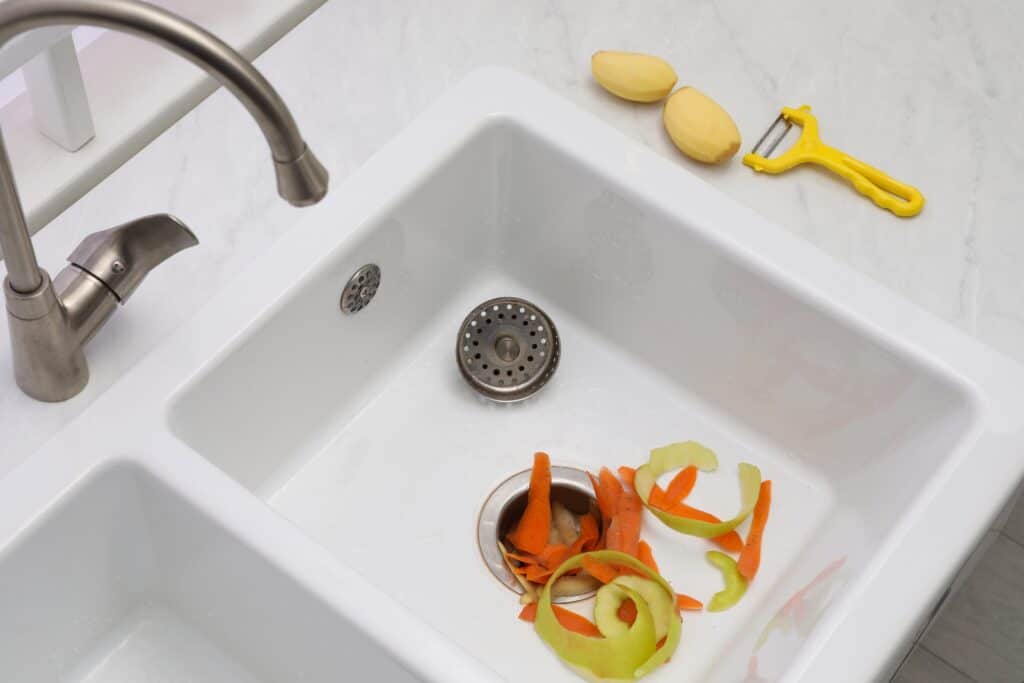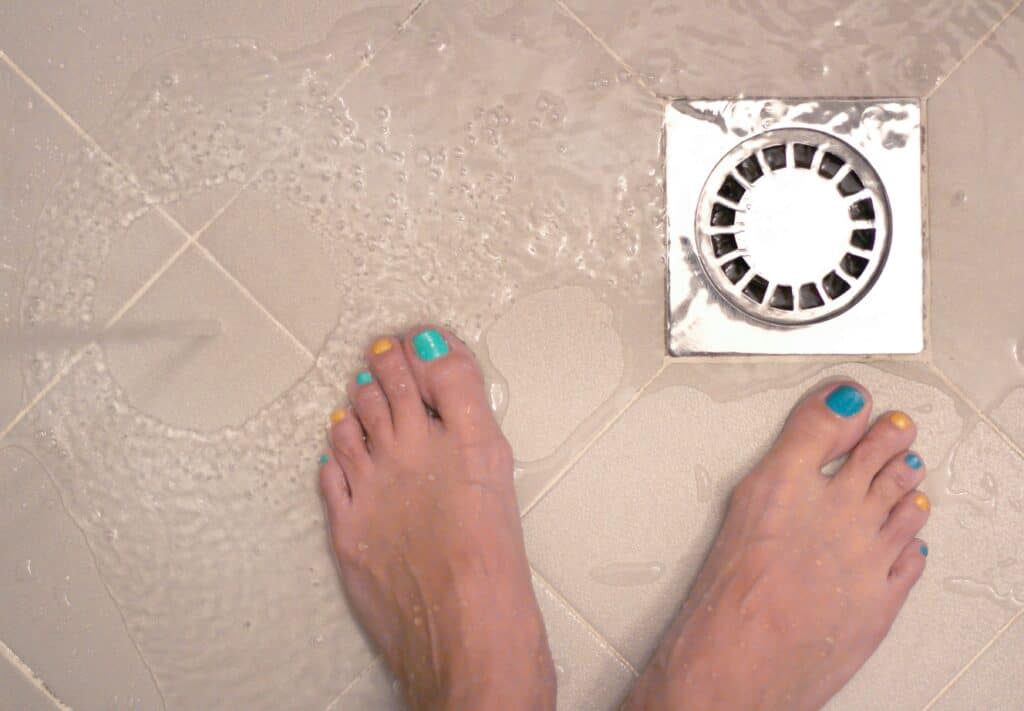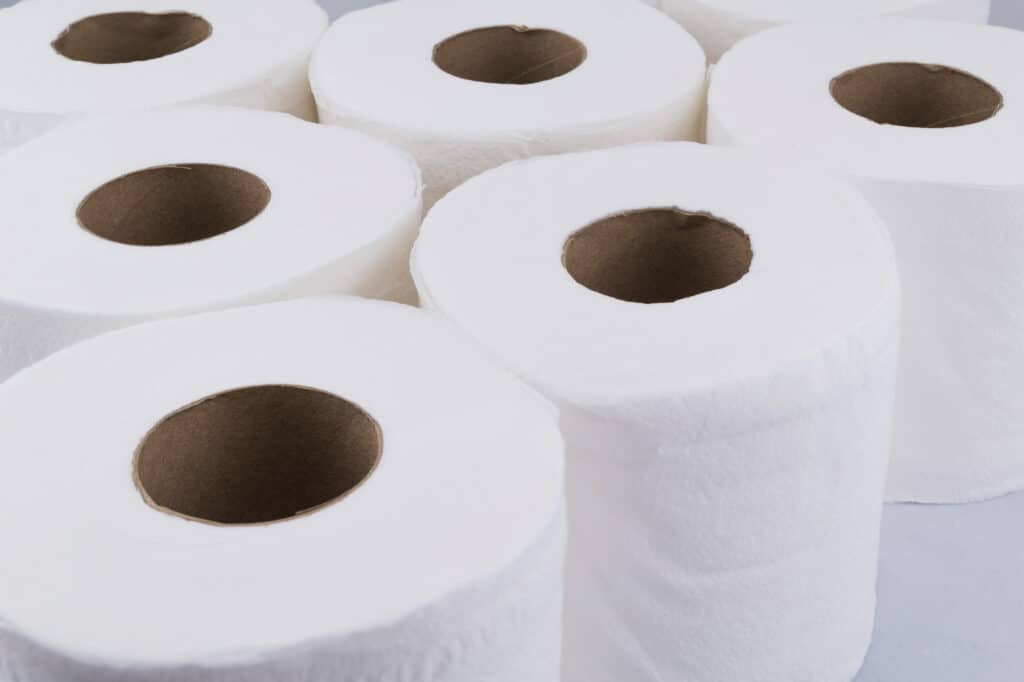Don’t Forget Your Drain During Spring Cleaning
If it’s time to pull the mop, broom, and vacuum from the closet for spring cleaning, remember your household drains! Drain cleaning is an easy way to keep your home’s plumbing in good condition.
Here we’ll go over why you should spring clean your drains and easy-to-do ways to clean them with household supplies.
Why Should Spring Cleaning Involve Drains
The plumbing pipes in a home are smaller than people imagine. Some clogs can damage pipes, especially if the pipes are aging. Although a small clog might not seem like a big deal now, they often morph into more significant issues without attention.
Garbage Disposal

Giving this hard worker a deep clean is a great way to extend its functional lifespan. A better way is to be diligent about not putting cooking grease, bones, fibrous fruits and vegetables, eggshells, and coffee grounds in the disposal.
- Disconnect the power by unplugging the cord under the sink or turning off the circuit breaker.
- Remove and clean the baffle, the rubber covering inside the drain.
- Scrub the visible top and underneath of the baffle with the sponge and dish soap. Rinse the sponge as needed.
- With the baffle removed, clean the grinding chamber with the sponge and additional dish soap.
- Pour in ½ cup baking soda, then slowly add one cup of distilled white vinegar.
- Place the sink stopper over the drain, let the mixture fizz, and clean inside for at least 10 minutes.
- Reconnect the power source, remove the stopper, turn on the garbage disposal, and flush the drain with hot tap water for at least one minute.
Kitchen Drains
Kitchen drains receive a lot of use. Daily they’re a dumping spot for dishes with food particles, half-empty cups and glasses, and occasionally, hand washing. Food, drinks, and cleaning products leave residue as they flow into the pipes, sometimes building into a clog and unsightly odor.
- Boil two quarts of water, then slowly pour it into the sink drain.
- Add a cup of baking soda, thoroughly rinse the drain, and sink with hot tap water.
- Pour a cup of distilled white vinegar or lemon juice into the drain and wait 30 minutes.
- Again rinse the drain and sink, and enjoy a deep-cleaned and fresh-smelling kitchen drain!
Bathroom Sink Drains
For large households, bathroom sinks are the frequent site of slow-moving drains and clogs. From soaps and lotions to makeup and toothpaste, it’s no wonder the best way to prevent issues is to check the drain weekly.

- Remove the sink stopper, if possible, and remove any easy-to-reach debris.
- Pour equal amounts of vinegar and water into a container, such as a large cup, and add a dash of baking soda.
- Pour the solution into the drain and wait 30 to 45 minutes.
- Flush the drain with boiling water.
Bathtub & Shower Drains
Most people know the “ick” feeling when standing ankle-deep in tepid water because the bathtub or shower drain has clogged. While it’s easy to blame the usual causes — bath products and hair — the best course of action is regularly cleaning this drain (and using a drain cover).
- Use a flashlight to look inside the drain and remove any visible debris with your fingers or a tool.
- Fill the shower stall or tub with enough water to cover the bell of a plunger.
- Plunge the drain for a few seconds — the pressurized water should move the clog after removing the plunger.
- Pouring four cups of boiling water into the drain.
- Add one cup of baking soda and one cup of vinegar, and wait at least 10 minutes.
- Rinse the drain with more hot water.
 If multiple people in your home have long hair, it’s recommended to clean the drains weekly.
If multiple people in your home have long hair, it’s recommended to clean the drains weekly.
Toilet Drains
Most homeowners do not want a springtime surprise in the toilet drain. The most common type of toilet drain clog is flushing too much toilet paper, but other common causes include:
- Hygiene products;
- Human or pet hair;
- Toys; and
- Trash
 Most biodegradable toilet paper and other bathroom paper products don’t degrade in the pipes and instead cause headaches. Only allow human waste to be flushed down the toilet drain and use a trash can for the rest. Maintain your toilet drains and attached plumbing by using equal parts of baking soda and vinegar in the drain weekly. Allow the combination to foam for several minutes, then flush to clear out minor clogs.
Most biodegradable toilet paper and other bathroom paper products don’t degrade in the pipes and instead cause headaches. Only allow human waste to be flushed down the toilet drain and use a trash can for the rest. Maintain your toilet drains and attached plumbing by using equal parts of baking soda and vinegar in the drain weekly. Allow the combination to foam for several minutes, then flush to clear out minor clogs.
Cleaning your household drains this spring is a great way to maintain their health and avoid major plumbing issues during the year. But if your spring schedule doesn’t allow for drain cleaning, give Bell Brothers a call for professional service.

